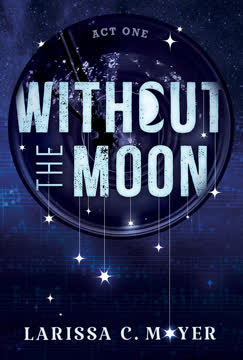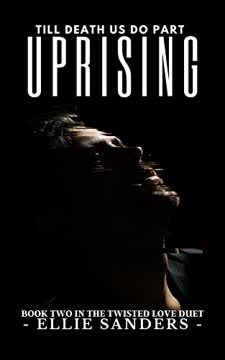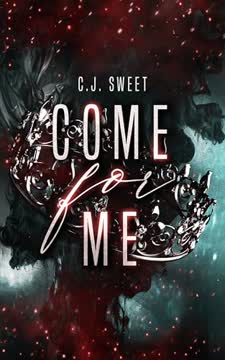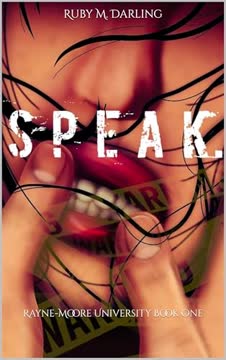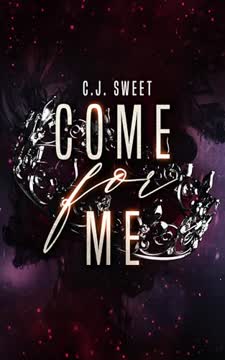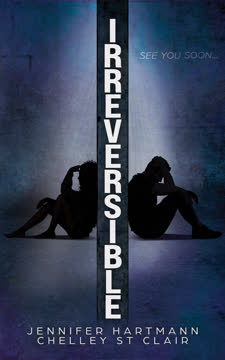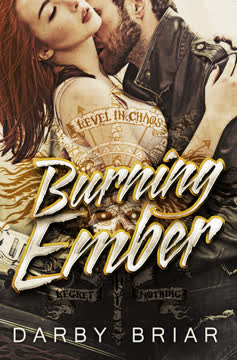Plot Summary
Haunting Beginnings, Shattered Innocence
The story opens with Paige, haunted by a trauma that shattered her innocence just after high school. She reflects on the darkness of adulthood, the loss of her parents, and the comfort of her grandmother, Gram. Paige's pain is visceral—her wrists are bandaged, her boyfriend Linc has left her, and she clings to the memory of their last moments. The world is no longer safe; the true horror is not in the shadows, but in the everyday. Paige's internal monologue is raw, angry, and desperate, as she tries to survive the aftermath of an unnamed, life-altering event. The prologue sets up a story about survival, memory, and the long shadow of trauma.
The Window's Allure
Now in LA, Paige works at The Window, an exclusive burlesque club, using her stage name "Blue." The club is a world of anonymity, performance, and ritual, where Paige hides her scars—both physical and emotional—behind glitter and corsets. She's late, distracted, and struggling to keep up, her body aching from the demands of her job and the weight of her memories. The club's strict rules and the camaraderie with Rio, a fellow performer, offer some structure, but Paige is isolated, using performance as both shield and escape. The city's chaos mirrors her internal turmoil, and the club's glamour is a thin veneer over her pain.
Ghosts of Seven Years
Linc, Paige's lost love, returns to Venice after seven years, breaking into the empty house that once held their shared happiness. The house is a time capsule, filled with the scent of lemons and memories of childhood. Linc's mind is fractured—memories come in flashes, both beautiful and horrific. He's tormented by guilt and loss, unable to fully remember or move on. The act of picking lemons from the old tree is both a ritual and a desperate attempt to reclaim something pure. Linc's trauma is as deep as Paige's, and his return signals the beginning of a reckoning with the past.
Tangled in the Past
The narrative weaves between present and "seven years ago," showing Paige and Linc's deep bond from childhood through adolescence. Their friendship is intense, intimate, and eventually romantic, but always shadowed by hardship—Paige's orphanhood, Linc's absent father, Gram's declining health. Their creative partnership (making "The Moon Movie") is a metaphor for their connection and the light they bring each other. But the past is not idyllic; it's filled with jealousy, misunderstandings, and the seeds of the trauma that will later destroy them. The story's structure mirrors their fractured psyches, as the past constantly intrudes on the present.
The Moon Movie's Shadow
Linc's film, a reimagining of "The Buried Moon," becomes a symbol of their love and the darkness that will consume them. The creative process is both a refuge and a source of tension—Paige is Linc's muse, but their ambitions and insecurities threaten to pull them apart. The film's narrative—about a moon who descends to earth and is captured by darkness—foreshadows the real-life horror to come. Their artistic dreams are entwined with their emotional lives, and the boundaries between performance and reality begin to blur, setting the stage for the catastrophic events that will follow.
Broken Routines, Broken Bodies
In the present, Paige's body is breaking down from overwork and neglect. She's forced to take time off from The Window after injuring herself, and her financial desperation grows. The rituals that once gave her comfort—stretching, singing, caring for her gecko Cheeto—are now reminders of what she's lost. Her isolation is profound, and her attempts at self-care are tinged with self-destruction. The city's indifference and the club's transactional nature amplify her sense of alienation. Yet, small acts of kindness from Rio and memories of Gram offer fleeting moments of hope.
Reunion in the Dark
A series of chance encounters brings Paige and Linc back into each other's orbit. Linc, now working as a security guard at The Window under an alias, is drawn to Paige without initially realizing who she is. Their reunion is electric, fraught with unresolved longing and pain. The club's labyrinthine structure and the anonymity of their roles create a sense of fate and inevitability. When Paige is targeted during a private event in the Veranda, Linc intervenes, and their shared trauma resurfaces. The past and present collide, forcing them to confront the truth of what happened and what they mean to each other.
The Veranda's Trap
The Veranda event becomes a crucible for Paige's fears. Promised safety and a lucrative payout, she instead finds herself at the mercy of powerful men who see her as disposable. The club's promises of protection are revealed as hollow, and the violence she endures is both physical and psychological. Linc's intervention is both heroic and tragic—he saves her, but the encounter reopens old wounds and exposes the club's complicity. The aftermath is a reckoning for everyone involved, as the illusion of safety is shattered and the true cost of survival is laid bare.
Aftermath and Reckoning
In the wake of the Veranda assault, Paige and Linc are forced to confront the full extent of their trauma. The club's management offers apologies and hush money, but the damage is done. Paige considers leaving LA, returning to Gram's house in Venice to reclaim her sense of self. Linc, wracked with guilt and self-loathing, struggles to believe he deserves forgiveness or love. Their friends, especially Ellis, try to help them piece together what happened and seek justice, but the system is indifferent. The search for truth becomes a search for meaning, as they try to make sense of the senseless.
Unraveling Truths
The discovery of a flash drive containing "raw footage" of the night that destroyed them becomes the story's turning point. Watching the footage together, Paige and Linc are forced to relive every moment of their ordeal—the manipulation, the violence, the ways they tried to protect each other. The footage reveals not only the horror of what was done to them, but also the depth of their love and the lies they've told themselves to survive. The truth is both liberating and devastating, as they realize the extent of the abuse and the ways it has shaped their lives.
Raw Footage Revealed
The raw footage is a harrowing, unflinching account of their captivity and assault. It exposes the calculated cruelty of their abuser, the complicity of others, and the impossibility of consent under coercion. Yet, within the horror, there are moments of tenderness—Paige and Linc's attempts to comfort each other, to reclaim agency, to survive. The footage becomes both evidence and catharsis, forcing them to confront the reality of what happened and the lies they've internalized. The act of watching is both a reckoning and a step toward healing, as they begin to separate their true selves from the roles forced upon them.
The End, and After
The story ends on a note of ambiguity and unresolved pain. The footage has given them proof of their innocence, but the damage is deep and lasting. Linc, overwhelmed by rage and shame, disappears, leaving Paige and Ellis to search for him. The revelation that their abuser may have kept Linc captive for years adds a new layer of horror and urgency. Yet, within the devastation, there is a glimmer of hope—the possibility of justice, the strength of their bond, and the promise that their story is not over. The final image is one of movement—rage against the dying of the light, and the determination to keep going, together.
Characters
Paige "Blue" Michaels
Paige is the emotional heart of the story—a woman marked by trauma, loss, and resilience. Orphaned young and raised by her fiercely loving Gram, Paige's life is shaped by both deep connection and profound abandonment. Her relationship with Linc is the axis around which her world turns, but it is also the source of her greatest pain. Paige is creative, sensitive, and fiercely loyal, but her self-worth is fragile, eroded by years of abuse and neglect. She uses performance—on stage and at The Window—as both armor and escape, hiding her scars behind glitter and bravado. Her journey is one of survival, self-discovery, and the slow, painful reclamation of her own story.
Lincoln "Linc" Morrow
Linc is Paige's childhood best friend, first love, and the other half of her soul. His life is defined by loss—an absent father, a fractured family, and the shattering trauma that drove him away from Paige. Linc is creative, sensitive, and deeply loyal, but he is also haunted by guilt and self-loathing. His memory is fractured, and he struggles to distinguish between reality and the lies he's told himself to survive. Linc's love for Paige is both his salvation and his curse; he believes he hurt her beyond repair, and his journey is one of seeking forgiveness, truth, and a way back to himself. His psychological wounds are deep, manifesting in dissociation, rage, and a desperate need to protect those he loves—even from himself.
Ellis Casper
Ellis is the third point in the story's central triangle—a childhood friend to both Paige and Linc, and a surrogate brother. Wealthy, passionate, and fiercely principled, Ellis is both a source of comic relief and a moral anchor. He is the one who tries to hold the group together, offering practical help, emotional support, and a relentless drive for justice. Ellis's own wounds are less visible but no less real—he struggles with the burden of privilege, the loss of his own family, and the helplessness of watching his friends suffer. His loyalty is unwavering, and his presence is a reminder that love and friendship can survive even the darkest times.
Darlene "Gram" Hansen
Gram is Paige's grandmother and the story's emotional bedrock. Wise, irreverent, and fiercely loving, she is both a source of comfort and a model of resilience. Gram's presence lingers even after her death, her voice echoing in Paige's mind as a source of strength and guidance. She represents the possibility of survival after loss, the importance of ritual and memory, and the enduring power of love. Her death is a turning point for Paige, forcing her to confront her pain and begin the long process of healing.
Jeremy Harris / The Man
Jeremy is the story's central antagonist—a trusted teacher, mentor, and friend who is revealed to be a manipulative, sadistic abuser. His charm and intelligence mask a deep well of cruelty and entitlement. Jeremy's abuse is both physical and psychological; he uses his authority, knowledge, and the language of art to justify his actions and control his victims. He is a master of performance, blurring the lines between reality and fiction, consent and coercion. His presence is a constant threat, and his betrayal is the wound that will not heal.
Rio
Rio is a fellow performer at The Window and one of the few people Paige allows close. Deaf, elegant, and fiercely protective, Rio offers Paige both practical help and emotional support. She is a model of resilience, having survived her own traumas, and her presence is a reminder that healing is possible. Rio's kindness is quiet but profound—she makes Paige wristbands to hide her scars, teaches her sign language, and offers a safe space in a world that is often hostile.
Jackson
Jackson is the head of security at The Window—a gruff, ex-military man who takes his responsibilities seriously but is ultimately complicit in the club's failures. He is both a source of structure and a symbol of the limits of institutional protection. Jackson's relationship with Paige is complicated; he is both a gatekeeper and a potential ally, but his inability to prevent her assault is a reminder that safety is often an illusion.
Selene
Selene is a fellow dancer at The Window, known for her gossip and her ability to find information. She is both a source of comic relief and a reminder of the club's insular, rumor-driven culture. Selene's role in the story is ambiguous—she helps Paige when needed, but her motivations are unclear, and her knowledge of the club's secrets is both a resource and a threat.
Maisie Morrow
Maisie is Linc's younger sister—a bright, loving child who represents the possibility of innocence and renewal. Her presence is a reminder of what has been lost, but also of what can still be saved. Maisie's relationship with Paige and Linc is a source of comfort and motivation, grounding them in the possibility of a future beyond trauma.
Beck Davis
Beck is the owner of The Window—a wealthy, charming man whose promises of safety and support are ultimately revealed as hollow. He is both a symbol of the club's allure and its complicity in exploitation. Beck's motivations are ambiguous; he offers Paige money, protection, and opportunity, but his true loyalties are unclear. He represents the seductive power of institutions that claim to care, but ultimately serve their own interests.
Plot Devices
Nonlinear Narrative and Dual Timelines
The story unfolds in a nonlinear fashion, weaving between present-day LA and the events of seven years prior. This structure mirrors the characters' fractured psyches, as the past constantly intrudes on the present. Flashbacks are used not just to reveal backstory, but to show how trauma distorts memory and identity. The dual timelines create suspense, deepen emotional resonance, and allow the reader to experience the characters' confusion and longing firsthand.
The Moon Movie as Metaphor
Linc's film, a reimagining of "The Buried Moon," serves as both a literal plot point and a metaphor for the characters' journey. The story of a moon who descends to earth and is captured by darkness foreshadows Paige and Linc's own descent into trauma. The creative process is both refuge and danger, as the boundaries between performance and reality blur. The film's imagery recurs throughout the novel, symbolizing hope, loss, and the possibility of return.
Performance and Role-Playing
Performance is both a theme and a survival strategy. Paige and Linc use acting—on stage, in the club, and during their captivity—as a way to cope with trauma and reclaim agency. The language of performance is weaponized by their abuser, who uses the rhetoric of art and direction to justify his actions and blur the lines of consent. The story interrogates the limits of performance as protection, and the dangers of losing oneself in a role.
Foreshadowing and Symbolism
Recurring symbols—lemons, music boxes, bracelets, and songs—anchor the characters in memory and ritual. Lemons represent both the sweetness and bitterness of life, music is a source of comfort and connection, and bracelets hide scars while symbolizing survival. These motifs foreshadow key events, provide emotional resonance, and offer moments of hope amid despair.
Raw Footage as Evidence and Catharsis
The discovery and viewing of the "raw footage" is the story's central plot device. It serves as both evidence of the characters' innocence and a means of catharsis. The act of watching is both a reckoning and a step toward healing, forcing Paige and Linc to confront the reality of what happened and the lies they've internalized. The footage is both a horror and a gift, offering the possibility of truth, justice, and self-forgiveness.
Analysis
Without the Moon: Act One is a harrowing, unflinching exploration of trauma, memory, and the long, painful road to healing. Larissa C. Moyer crafts a narrative that is both deeply personal and universally resonant, using nonlinear structure and rich symbolism to mirror the fragmentation of the traumatized mind. The novel interrogates the limits of performance as both protection and prison, blurring the lines between art and abuse, consent and coercion. At its core, the story is about survival—the ways we cling to ritual, memory, and each other in the face of unspeakable horror. The relationship between Paige and Linc is both a love story and a tragedy, marked by devotion, misunderstanding, and the corrosive effects of shame. The novel refuses easy answers or tidy resolutions; instead, it offers a raw, honest account of what it means to live with the aftermath of violence, and the slow, uncertain process of reclaiming one's story. In a world that often demands silence and complicity, Without the Moon insists on the power of truth, the necessity of rage, and the possibility of hope—even, or especially, when the light is gone.
Last updated:
Review Summary
Without the Moon is a dark, emotionally intense romance that has captivated readers. The story follows childhood sweethearts Paige and Linc as they navigate trauma and reconnect after years apart. Reviewers praise the raw, gripping writing style, complex characters, and slow-burn romance. Many found the book addictive and heartbreaking, with unexpected twists and a cliffhanger ending. While the dark themes are challenging, readers appreciate the depth of emotion and compelling storytelling. Most eagerly anticipate the sequel to resolve the cliffhanger.
Similar Books
Download PDF
Download EPUB
.epub digital book format is ideal for reading ebooks on phones, tablets, and e-readers.
